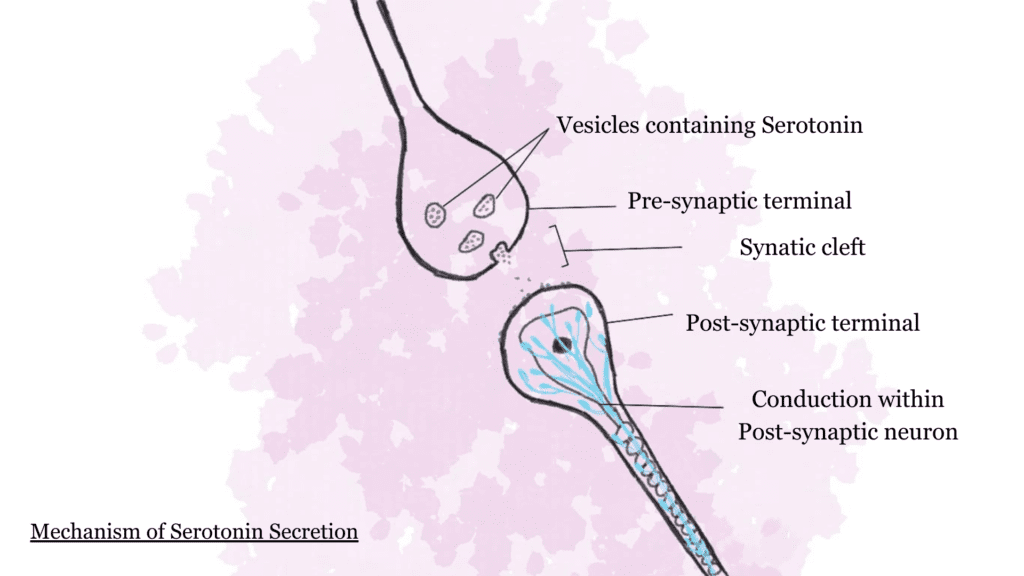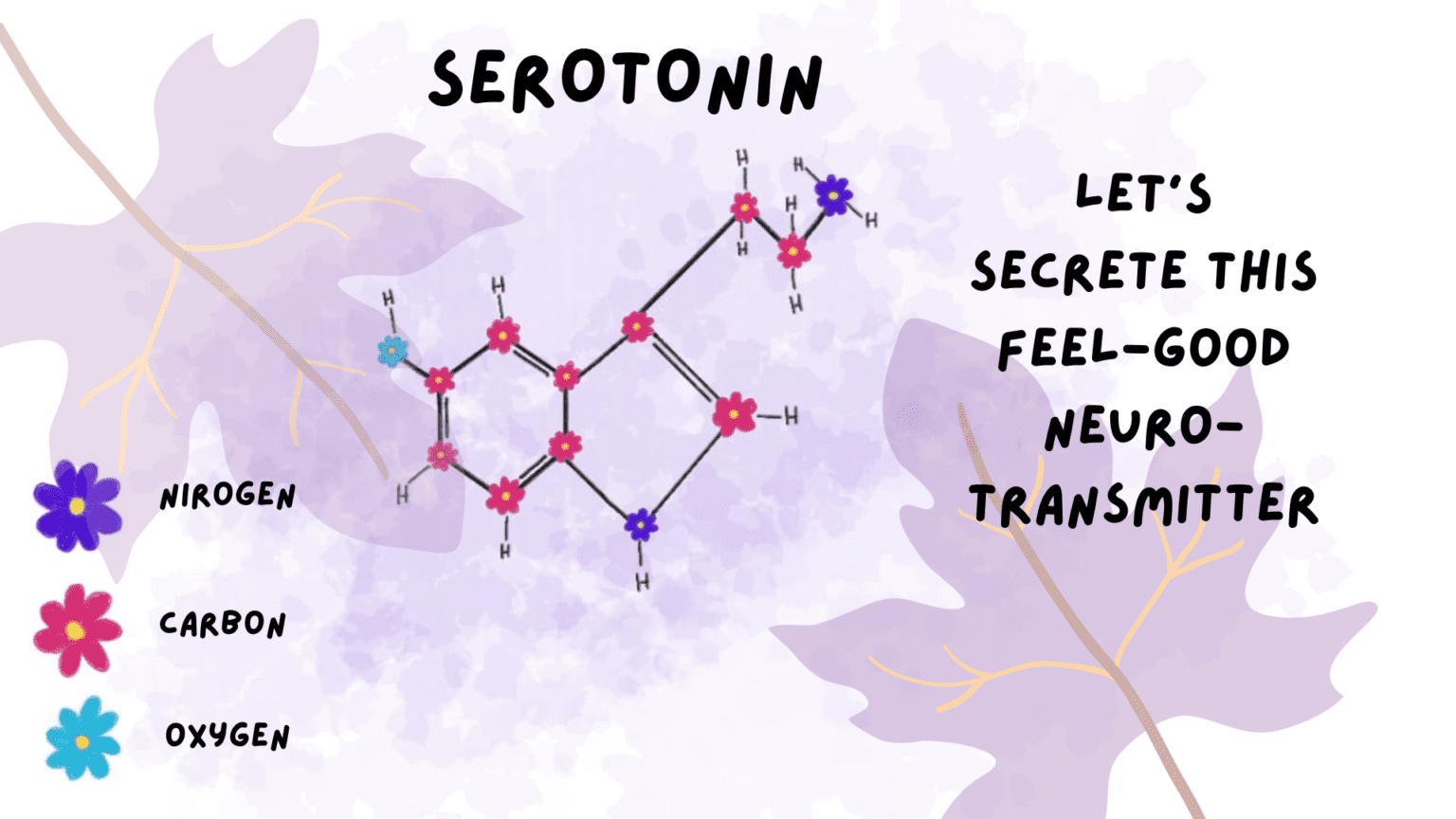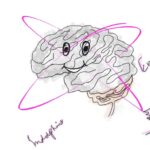Serotonin is a neurotransmitter actively produced in the central nervous system. Outside the central nervous system, the favorite site of serotonin production is the gastrointestinal tract or gut. Its role in the gut is not completely known and somewhat complicated, but here we will discuss the general mechanism of serotonin production and its secretion. Before beginning the mechanism of its production and secretion, it’s good to know about some causes that behave as stimuli for this process.
Table of contents
Which Precursor Molecule Leads to the Production of Serotonin?
Tryptophan is an essential amino acid for animals, including humans. Tryptophan being an essential amino acid, not synthesized naturally in our body. Body gets tryptophan either through diet or supplements. It serves as a precursor molecule for various essential chemicals in our body including serotonin, melatonin, and vitamin B3. After hydroxylation and decarboxylation of tryptophan, it is converted into serotonin. This produced serotonin is stored in vesicles within serotonin-producing neurons and secreted as a neurotransmitter upon proper stimulation. The pre-synaptic terminal of serotonin-producing neurons contains these serotonin vesicles.
What Stimuli Cause the Secretion of Serotonin?
Multiple stimuli can trigger the release of serotonin from serotonin-containing vesicles. Some factors are listed below that are common in initiating the release.
Neural Excitability;
Excitatory signals along the length of serotonin-producing neurons can instigate the release of serotonin in the synaptic cleft. These excitatory signals lead to the neural excitability of the concerned neurons. Neural excitability causes the depolarization of the concerned neurons and thus secretion of serotonin for impulse transmission. Stimulation of receptors based on such neurons also brings about the transmission of an electrical message that makes the release of serotonin, as a neurotransmitter, compulsory.
Emotional States;
Serotonin plays a well-defined role in improving mood and mitigating stress symptoms. This role of serotonin enhances its secretion under specific emotional states. Depressing or stressful situations can trigger the release of serotonin for its mood-boosting effects. This stimulation can be natural or artificial if induced through medications. But our brain naturally causes its secretion when the body needs it the most.
Exposure to Natural Light;
Sunlight prompts the synthesis of serotonin in specified brain regions. Sunlight contains ultraviolet B rays (UVB rays) that can directly influence the production and secretion of serotonin and melatonin, affecting circadian rhythms and mood regulation.
Aerobic Physical Exercise;
Physical exercise, both aerobic and non-aerobic affects our emotional health. Aerobic exercises, more specifically involved in serotonin secretion influence our emotional well-being. Aerobic exercises, like running or cycling that boost the uptake of oxygen, contribute to mood upgradation in many ways. One such way is the activation of serotonin-producing receptors. This has a direct effect on our emotional state.
Dietary Tryptophan;
Tryptophan is an essential amino acid and must be taken through diet. Being a precursor molecule of serotonin, its adequate levels are important. Certain foods are rich in tryptophan like turkey, chicken, fish, dairy products, and eggs. These foods can induce sleepiness and mood upregulation and hence serve as a high source of tryptophan.
The whole mechanism of serotonin secretion as a neurotransmitter
Before engrossing into the whole mechanism of serotonin secretion, one must have an understanding of certain terminologies. These terminologies include pre-synaptic and post-synaptic terminals, synaptic cleft, and the synapse itself. For a general understanding, a synapse is a connection between two conducting neurons. In this specific context, a synapse is a joint (not a physical one, as there is a gap between them) between serotonin-producing and conducting neurons.
Physical gap between two neurons ( as they are not in direct contact) is synaptic cleft. The terminal part of the neuron through which the message is coming is known as the pre-synaptic terminal of the specific neuron. Similarly, the proximal part of the neuron to which the message is conducting is known as the post-synaptic neuron. Pre-synaptic membrane of conducting neuron releases neurotransmitters for the propagation of message to the successive neuron. Serotonin works as a neurotransmitter.

Arrival of Action Potential;
Once, neurons receive the signals for activation, they initiate the action potential. Before the arrival of the action potential, the neuron was resting referred to as the resting membrane potential. The transformation of these potentials primarily depends upon the polarization of charges. Action potential causes the calcium channels to open and calcium ions rush into the pre-synaptic terminal. Calcium ions facilitate the release of serotonin by triggering the subsequent events. They promote the movement of serotonin-containing vesicles towards the membrane of the pre-synaptic terminal of the neuron.
Vesicles Docking;
Due to the influx of calcium ions, vesicles start to move towards the membrane of the pre-synaptic neuron. The fusion of vesicles with the pre-synaptic membrane is assisted by a special complex of proteins called the SNARE proteins. The SNARE complex consists of three types of proteins: vesicle SNARE proteins (V-SNAREs), target SNARE proteins (T-SNAREs), and quaternary SNARE proteins (Q-SNAREs). These three proteins assemble to make a SNARE protein complex. SNARE proteins play an important role in the fusion of membranes and the release of neurotransmitters in the synaptic cleft.
Release of Serotonin;
Q-SNAREs bring other vesicle proteins and target proteins nearby. Assembly of these three proteins prompts the zippering mechanism which brings forth the release of serotonin. The term ‘Zippering Mechanism’ is named so due to its structural conformation. The countering regions of SNARE proteins on vesicles and membranes form coiled-coil interactions. These coiled-coil interactions resemble the structure of a zip. More and more SNARE proteins come together to tight this zipper and as an outcome of this, it creates a pore which aids in the release of serotonin into the synaptic gap. After the release of serotonin, coiled-coil interactions unwind each other and recycle the assembly for future winding.
Activation of Serotonin Receptors on Post-synaptic Neuron;
Target receptors on post-synaptic neurons receive serotonin. Different types of serotonin receptors instigate different mechanisms or reactions further, involving ion modulation, neural excitability inhibitory mechanism, or feedback loops. Depending upon the receptor subtypes and the neural regions, diverse types of neural outcomes are supposed. The most well-known function of serotonin is the calming effect and mood regulation, but besides this, there is a variety of roles that serotonin plays in our body.





The theme is interesting, I will take part in discussion. I know, that together we can come to a right answer.